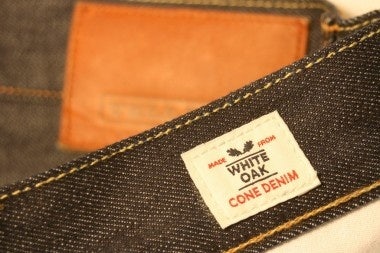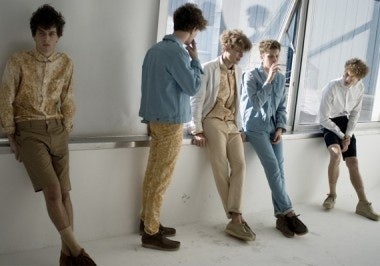"Suddenly 'Made in America' Has A Value To The Chinese Customer"#

By this point, it's well established that China's shoppers are fans of American brands like Coach, Ralph Lauren, Levi's and Tiffany & Co., are buying Buicks and Cadillacs at an impressive rate, and are slowly but steadily coming around to Californian wines. But for smaller brands, particularly those made on a more limited scale in the US, opportunities are opening up in the Chinese market as well. In recent years, fueled by the "workwear" trend that swept through the American and European menswear markets, American-made brands like Red Wing, Woolrich, Engineered Garments, Tellason, Billy Reid and dozens more have found their niches in Western markets and Japan. Now, with the growing sophistication we're seeing among some discriminating Chinese shoppers in top-tier cities (or those living abroad), US-made American brands may have a chance to crack the China market in coming years.
Though "Made in USA" may not have the same draw as "Made in France" among the vast majority of Chinese high-end consumers, the higher price-tags, lower production volume, and quality of suitmakers like Hickey Freeman, denim brands like Roy, and shirt-makers like Gitman Bros. will likely give an ever-growing number plenty of reason to feel confident choosing a Hill-Side tie over Hermès.
Already, we've seen interest sparking in China in American-made heritage brands over the past year. Last month, the Wisconsin-based shoemaker Allen Edmonds -- one of the only two American high-end men’s shoemakers still producing domestically (along with Alden), and the choice of presidents and CEOs for decades -- announced plans to enter the China market this year while keeping its manufacturing base firmly in the US. One month before that, the denim brand 7 For All Mankind (which produces its products in the US of imported denim) launched in Macau, looking to get a piece of the lucrative premium denim market in the Greater China region.
For its part, Levi's, which has revitalized its brand in the United States by creating special jean lines using American-made denim from North Carolina, has stopped short of selling these US-made lines in China, but has experimented with a new range of jeans made from Japanese denim, which carry a correspondingly high price tag of 1,499 yuan (US$236).

As the young New York-based designer Patrik Ervell tells Bloomberg this week, despite much higher costs in producing items domestically, he thinks the "Made in USA" tag is starting to catch on among quality-minded buyers in newer markets like China:
[Bloomberg]: Producing most of your clothes in the U.S. probably takes a chunk out of your margins.
Ervell
: For one season I did production in South Korea, and then we moved it back here. There was something missing. There was a flatness to the clothing. When everything is made here in the garment district, we go to the factories every day and work with the people making the clothing.
Bloomberg: Do you think your customers notice the difference?
Ervell
: For a long time, being made in America wasn’t seen as a nice thing, but that’s changed a lot, especially in menswear.
I’m manufacturing clothing here in New York, and I’m exporting it to China and South Korea and Japan. Suddenly “Made in America” has a value to the Chinese customer in almost the same way that “Made in France” or “Made in Italy” once had for Americans.
While the key point here is that US-made heritage brands generally don't have the production capacity (or, for some, the desire) to expand into the China market in any major way, a niche is clearly forming in China. As anyone who has taken a look at a Japanese menswear magazine like "Free & Easy" knows, all it takes is a group of dedicated brand enthusiasts to spark a trend. With the likes of Patrik Ervell on the more adventurous side, and Allen Edmonds on the more traditional side, making inroads in China despite virtually nonexistent advertising budgets or huge online campaigns, we can safely assume that demand will only rise for American brands besides Tiffany and Coach. Given the number of well-curated, small multi-brand retailers grows in China as well, the trend may really take hold in a measurable way sooner than we'd expect.
